When we originally booked the Tashkorgan Crown Inn Hotel, we also engaged their services to provide a car and driver to take us down the Karakoram Highway to Tashkorgan and back to Kashgar the next day. Early the next morning we were met at our hotel by our driver who was accompanied by two Chinese travel agents from the Crown Inn. We thought we were to be accompanied by at least one person who spoke English but we quickly worked out that the agents were the guys that needed to be paid in cash and that our Tajik driver Mukhtar would be taking us alone to Tashkorgan.
At that stage we were a bit doubtful about taking the trip to Tashkorgan, the last frontier town in China before the check post into Pakistan. But we had heard and read so much about the famous scenic but challenging Karakoram Highway that we decided that even if it was the "Journey Not the Destination", then it should be worthwhile. I may add that we had also read widely that Tashkorgan is "a lonely, dusty one-street outpost town with the dubious reputation of being a desperate haven for bordering Pakistanis wanting gambling, drugs, alcohol and prostitution...." We were expecting a pretty rough place but reminded ourselves that it was "after all, just for one night". I seem to recall us saying this many times.
And so we started off with some trepidation from Kashgar with our lovely driver Mukhtar who spoke no English but it didn't matter at all - and thankfully a sturdy looking but ancient four wheel drive - that we thought perhaps would matter at all.
Tashkorgan is located about 230 km south-west of Kashgar, some 120 km from the formal Pakistan border. In fact the township is located within the militarised zone between Tashkorgan and Sost on the Pakistan side of the border. The Karakoram Highway from Kashgar to Tashkorgan hugs the Chinese border and at two road intersections is only some 50 km from Afghanistan and just 14 km from Tajikistan. The Highway then travels past Tashkorgan and onto Pakistan, passing down the Old Silk Road route toward the Khunjerab Pass - also named the Valley of Blood – an ancient reference to local bandits who took advantage of the desolate terrain to plunder caravans and slaughter merchants when the road was used for centuries by ancient traders travelling in and out of China and Central Asia.
The highway route out of Kashgar weaved through pretty countryside. Still within the oasis of Kashgar, it was full of farms with fruit and nut orchards and what looked like emerging paddy rice crops flood irrigated from the Kashgar city oasis. The small villages were alive with markets and the roads full of people and hundreds of donkey carts laden with fresh produce. The donkeys looked fine, fat and well and trotted along happily amongst honking bikes, cars and trucks. Local school children walked long distances along the highway to school and local women and men squatted on the sides of the road chatting to each other. About an hour out of Kashgar we passed through the buzzing village of Wupal, with its sprawling rural markets and even more donkey carts. It was a pretty laid back environment and a very pleasurable trip.
Another 50km or so the scenery became one of yet again endless but fascinating desert landscapes of the huge Taklamakan Desert with the Pamir Plateau at a height of some 3,000m. But always a massive snow laden mountain range was in front of us becoming more menacing but even more magnificent as we approached. Suddenly Mukhtar pointed toward the two highest snow clad peaks and shouted "Mustagh Ata, Kongur Shan!". These fabulously handsome mountains are the highest peaks along the Karakoram Highway, standing at the dizzy heights of 7,546 and 7,719 meters respectively. We were filled with both excitement and some trepidation.
Further along the highway, the road followed the Ghez River and the colours of the surrounding rocky scenery became intense, sometimes with huge deposits of blood red iron ore and then brilliant green serpentine rocks and puce pink cliff faces where the highway had blasted through.
For most part of the journey to Tashkorgan, the Karakoram Highway is a two lane road cut into crumbly loess interspersed with slate. Major recent landslides made the road in some places just a small one lane that worked around the huge road blockages. In some places water had seeped across the road, freezing into solid blocks of ice. Stalactite icicles, some around a meter long, hung from the surrounding rock faces. We were pleased that Mukhtar was a very experienced and careful driver. He was a delightful man and we think he enjoyed our company on the way. Anyway, he certainly liked our toffees although they smelt somewhat of formaldehyde.
Two hours out of Kashgar we reached Ghez, a serious looking Chinese checkpoint and like all Chinese check posts, you definitely need your destination spelt out and of course necessary papers and passports. Once we realised that we had to disembark from Mukhtar's car and go through the check post by foot, we had no problems at all. A faceless official stared at us, asked where we were travelling to, then curtly flagged us through the post.
Further along the highway we came across Lake Karakul, the highest lake in the Pamir Plateau, situated at the junction of the Pamir, Tian Shan and Kunlun mountain ranges. Along the sides of the lake were huge sand dunes making a dirty tan blanket of wind blown sand around the mountain peaks. The lake was as it had been so aptly described - a brilliant azure blue. Edges of the lake and the entire streams feeding into it were completely frozen. A number of poor looking Kyrgyz settlements occupied the fringes of the lake and we were approached on several occasions by hopeful locals wanting us to buy jewellery or ride ponies around the lake. It was bitterly cold and windy and to Alan's relief I declined the offer to ride ponies.
The pass from Lake Karakul was high enough to take our breath away - as was the stunning scenery. It was splendid - huge snow capped plum coloured mountains with moist green valleys grazed by yaks, sheep and camels attended by nomads living in canvas yurts. To our astonishment, a number of the yurts appeared to be constructed out of cement. Obviously, not inhabited by nomads...
We passed the turn offs to the Afghanistan and Tajikistan borders and some 20 minutes or so later entered the township of Tashkorgan. We were still wondering just what we were in for.
Surprisingly, we were not under whelmed by Tashkorgan. Nestled in the prettiest site between huge mountain peaks with neighbouring Pakistan, Afghanistan and Tajikistan just a stone's throw away this lovely, friendly township was a real delight.
Tashkorgan, also known as Taxkorgan (official spelling) or Tashkurgan is a Uighur name for Stone Fortress or Stone Tower. It is situated at an altitude of 3,600 meters and is today mainly a market town for sheep, wool and woollen products. The majority of the population is ethnic Tajiks mostly speaking Sarikoli. Tashkorgan has a long history as one of the major stopping places along the Silk Road where caravan routes converged leading to Kashgar in the north, Karghalik to the east, Wakhan to the west and Chitral and the Hunza in the south-west in the Northern Areas of Pakistan. It boasts a harsh, cold and arid climate with frequent dust storms and winter snows.
The ruins of the old mud and brick fortress still stand today on the very edge of the town. It is estimated to be around 600 year's old although local lore says Tashkorgan has been a citadel for over 2,300 years. A site of Tashkorgan was mentioned by Greek scientist Ptolemy (AD 90-168) and was thought to be a stopping place for Marco Polo in his remarkable journeys across China and beyond.
We found Tashkorgan to be a relaxed and friendly place with wide paved roads leading to the town centre's gold city building with its dramatic white clad tower and eagle sculpture. The colour that dominates the streets of Tashkorgan is vibrant red. Tajik women’s suits are red, their hats and veils are red and there is a huge amount of red cloth for sale. Even the street signage is largely red. The entire township looks like a giant market, with a huge number of clothing and material displayed on racks outside the shops and merchandise spread across the footpaths.
There was a lot of road restoration underway. Dusty lanes were being paved with attractive pink pavers and there was an ambiance of well being and friendliness. Most of the inhabitants were saw were Tajik and the clothing worn by the women was stunning - circular flat head pieces covered with brightly coloured veils and long elegant gowns - and boots. Everyone wore boots and we could well understand why in the cold climate of Tashkorgan. The men were interesting in their expressive greetings with other men with much hand kissing, arm slaps and obvious camaraderie. It was fascinating to see such outward friendship.
Everyone was yet again most interested in Alan and his height of some six foot five inches. He certainly towered over the locals.
We spent the afternoon happily wandering around the streets and shops. At one shop Alan the Compulsive Carpet Buyer couldn't help himself and bought two prayer rugs. The shop owner was a distinguished and charming man with an enormous black moustache. He proudly told us he was a trader from the Hunza area of north Pakistan. We were intrigued with his stories of his trading in Pakistan and I was even more intrigued with an astonishingly large and beautiful piece of lapis lazuli he had in his display cabinet. This was for "good luck" he told us. Regrettably it was not for sale.
Our wanderings took us through the small but interesting fruit and vegetable markets. At one end men were playing billiards on dusty tables obviously always left outdoors. There was a lot of local interest and it seemed that everyone was enjoying themselves.
To our surprise we came across the old ruins of the stone fortress. We were totally on our own and as the sun was setting it was very special to be able to absorb the intense atmosphere of the old fort, with its wonderful Silk Road history. It must have been able to tell some amazing stories. We couldn't help but feel moved to have the fortune to watch the long shadows of the ruins in a pinky dusky afternoon light, in such a peaceful setting with just some donkeys, cattle and their owners passing by.
Although we were disappointed that the Crown Inn Hotel had closed, we were relieved that we could at least get accommodation in the Stone City Hotel. On our arrival to our hotel our first impressions were of a run down seedy establishment, badly in need of refurbishment. Accompanied by Mukhtar, we ventured into the hotel with some trepidation. We were very formally introduced to the owner who was a large man with a loud voice and a very friendly manner. Our hearts sank however as we were then led up a rickety stairway to what we expected would be our room. After some discussion with Mukhtar, he must have changed his mind and we were proudly taken back downstairs to what we guessed was the relevant equivalent to "The Presidential Suite" - due no doubt to the intervention of our beloved Mukhtar.
It was a huge two room suite with a large lounge and chairs, chandelier light fittings and large windows that looked out onto the township and ice capped mountains beyond. This looked much more promising and we were beginning to feel much happier...
Athough it was undoubtedly a lovely room, we found ourselves in quite a comical situation. Nothing at all worked - except thank goodness, the heating. An enormous filtered water machine was impressive but it didn't work and the water looked like it may have been there since Marco's days. Electrical power points hung precariously on their coloured wires out of the walls and sparks flew when we tried to turn on any appliances. Any maintenance had obviously been done very economically and our lovely chandelier light fitting in the lounge had been fitted by a huge hole crashed through the plaster.
But thankfully, we had our own toilet - and it was western. It didn't matter that it leaked dubious brown looking water over the entire bathroom floor or that the cistern worked by pulling a saturated wet rope. It was ours and we didn't have to share! I may add that although the refrigerator itself didn't work, the refrigeration facilities were fantastic. By early evening it was bitterly cold and so we just put the beer out of the window and we had the coldest beer we had to date in China!
We had an enjoyable meal at the restaurant. We were the only patrons and the staff went to no end of trouble to ensure we had copious quantities of fried noodles, fresh vegetables and meat dishes.
Mukhtar had arranged to pick us up the next morning at 10.00 am Beijing time, which of course was only 8.00 am local time. We had not realised that the hot water is not turned on until 8.00 am local time, nor is breakfast served until then. Washing our hair and bathing under a freezing cold (snow temperature) tap was an instant migraine and of course we missed breakfast. But who cared? We thoroughly enjoyed our stay in Tashkorgan and would recommend it to our friends who are keen on exploring far away places.
While waiting for Mukhtar, in the pale early morning light we looked out onto the massive and forbidding mountains that separate China and Pakistan, home to the treacherous Khunjerab Pass, once known as The Valley of Blood. We pondered what was over those mountains. They were so strangely magnetic. But you would never consider going on to Pakistan - would you?
We did*.
*"Painted Faces of the Silk Road, Travelpod 2009
A Driver Called Mukhtar - Travels to Tashkorgan
Tuesday, October 30, 2007
 Tashkorgan, Xinjiang, China
Tashkorgan, Xinjiang, China
Other Entries
-
3A Brief Return to Our Favourite City of Shanghai
Oct 0822 days prior Shanghai, Chinaphoto_camera5videocam 0comment 0
Shanghai, Chinaphoto_camera5videocam 0comment 0 -
4Our Journey to Zhongdian, via Kunming
Oct 0921 days prior Kunming, Chinaphoto_camera2videocam 0comment 0
Kunming, Chinaphoto_camera2videocam 0comment 0 -
5Two Delightful Days in Shangri-la - "Paradise"
Oct 1020 days prior Zhongdian, Chinaphoto_camera8videocam 0comment 0
Zhongdian, Chinaphoto_camera8videocam 0comment 0 -
6Mystical Lhasa
Oct 1119 days prior Lhasa, Chinaphoto_camera8videocam 0comment 0
Lhasa, Chinaphoto_camera8videocam 0comment 0 -
7Friendly and Not so "Ho-Hum" Tsedang
Oct 1317 days prior Tsedang, Chinaphoto_camera16videocam 0comment 0
Tsedang, Chinaphoto_camera16videocam 0comment 0 -
8Rural Tibet - Our Desert Journey to Gyantse
Oct 1515 days prior Gyantse, Chinaphoto_camera19videocam 0comment 0
Gyantse, Chinaphoto_camera19videocam 0comment 0 -
9More of Rural Tibet - Our Trip to Shigatse
Oct 1614 days prior Shigatse, Chinaphoto_camera4videocam 0comment 0
Shigatse, Chinaphoto_camera4videocam 0comment 0 -
10Returning to Lhasa
Oct 1812 days prior Lhasa, Chinaphoto_camera4videocam 0comment 0
Lhasa, Chinaphoto_camera4videocam 0comment 0 -
11Aboard the Lhasa Express - Lhasa to Golmud
Oct 1911 days prior Golmud, Chinaphoto_camera18videocam 0comment 0
Golmud, Chinaphoto_camera18videocam 0comment 0 -
12Salt Pans, Altun Shan and a Taklamakan Apparition
Oct 2010 days prior Dunhuang, Chinaphoto_camera6videocam 0comment 0
Dunhuang, Chinaphoto_camera6videocam 0comment 0 -
13Lovely Dunhuang - An Oasis in the Gobi Desert
Oct 228 days prior Dunhuang, Chinaphoto_camera16videocam 0comment 0
Dunhuang, Chinaphoto_camera16videocam 0comment 0 -
14Frenetic Liuyuan and our Rail Trip to Turpan
Oct 237 days prior Turpan, Chinaphoto_camera0videocam 0comment 0
Turpan, Chinaphoto_camera0videocam 0comment 0 -
15Toward Turpan - Our Welcome to Xinjiang Province!
Oct 246 days prior Turpan, Chinaphoto_camera2videocam 0comment 0
Turpan, Chinaphoto_camera2videocam 0comment 0 -
16Tales of Turpan - Second Lowest Basin in the World
Oct 246 days prior Turpan, Chinaphoto_camera11videocam 0comment 0
Turpan, Chinaphoto_camera11videocam 0comment 0 -
17Exotic Urumqi - As Far From the Sea as You Can Be
Oct 264 days prior Ürümqi, Chinaphoto_camera7videocam 0comment 0
Ürümqi, Chinaphoto_camera7videocam 0comment 0 -
18Twenty Three Hours to Kashgar by Rail
Oct 282 days prior Kashgar, Chinaphoto_camera0videocam 0comment 0
Kashgar, Chinaphoto_camera0videocam 0comment 0 -
19Our Introduction to the Frontier City of Kashgar
Oct 291 day prior Kashgar, Chinaphoto_camera4videocam 0comment 0
Kashgar, Chinaphoto_camera4videocam 0comment 0 -
20A Driver Called Mukhtar - Travels to Tashkorgan
Oct 30 Tashkorgan, Chinaphoto_camera14videocam 0comment 0
Tashkorgan, Chinaphoto_camera14videocam 0comment 0 -
21Kashgar Old City, More Carpets and Abdul Karim
Oct 311 day later Kashgar, Chinaphoto_camera7videocam 0comment 0
Kashgar, Chinaphoto_camera7videocam 0comment 0 -
22On the Home Run - From Kashgar Back to Urumqi
Nov 023 days later Ürümqi, Chinaphoto_camera4videocam 0comment 0
Ürümqi, Chinaphoto_camera4videocam 0comment 0 -
23From Urumqi to Shanghai, Sydney and Home
Nov 045 days later Shanghai, Chinaphoto_camera1videocam 0comment 0
Shanghai, Chinaphoto_camera1videocam 0comment 0 -
24Home In Crowdy Head and A Message to Our Readers
Nov 056 days later Crowdy Head, Australiaphoto_camera0videocam 0comment 0
Crowdy Head, Australiaphoto_camera0videocam 0comment 0

 Tashkorgan, Xinjiang, China
Tashkorgan, Xinjiang, China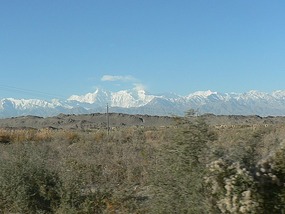
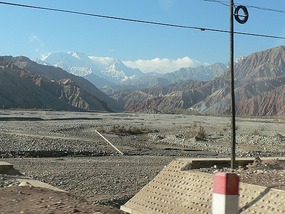
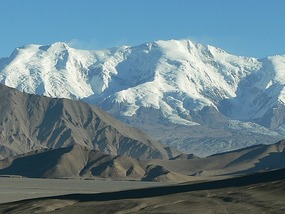
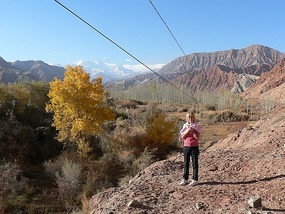
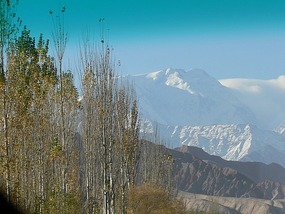
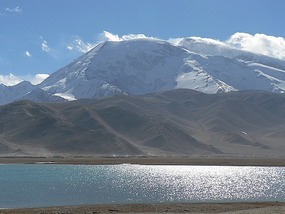
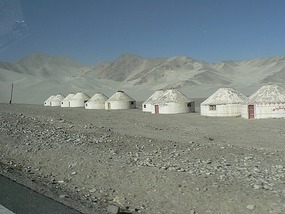
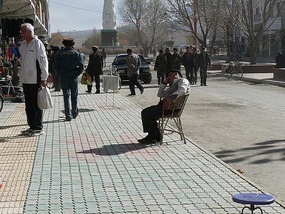
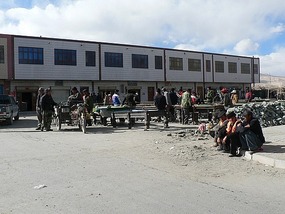
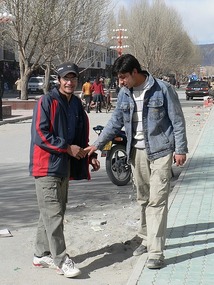
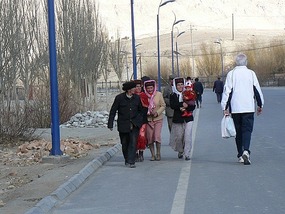
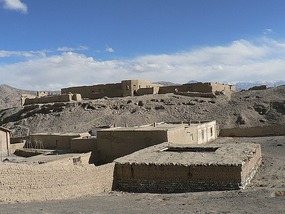
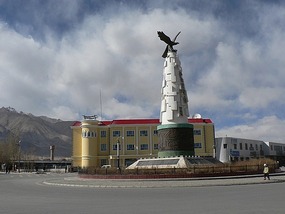
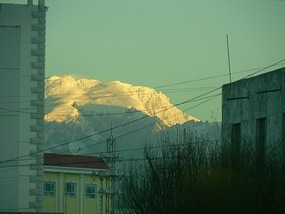


2025-05-23